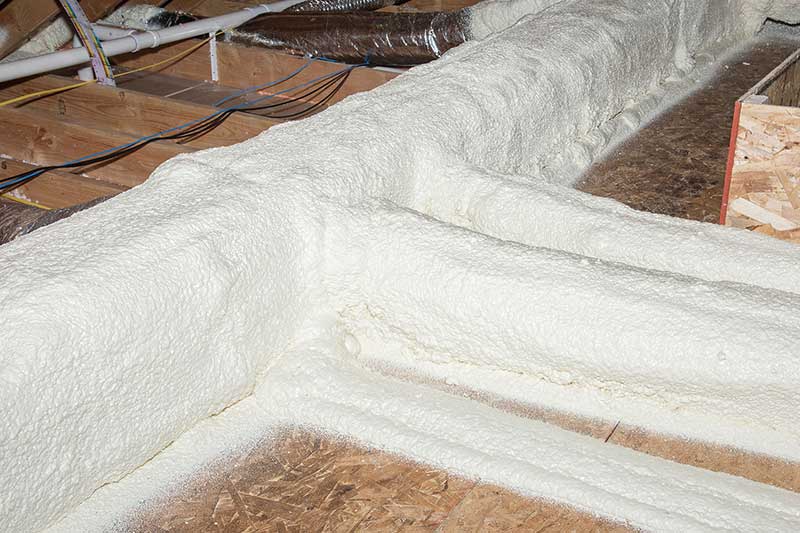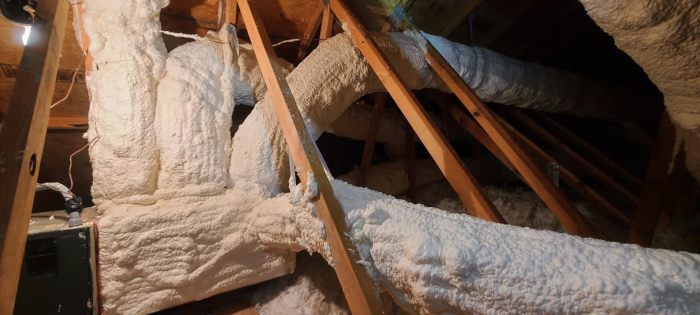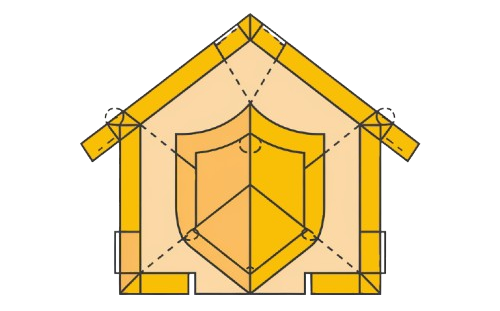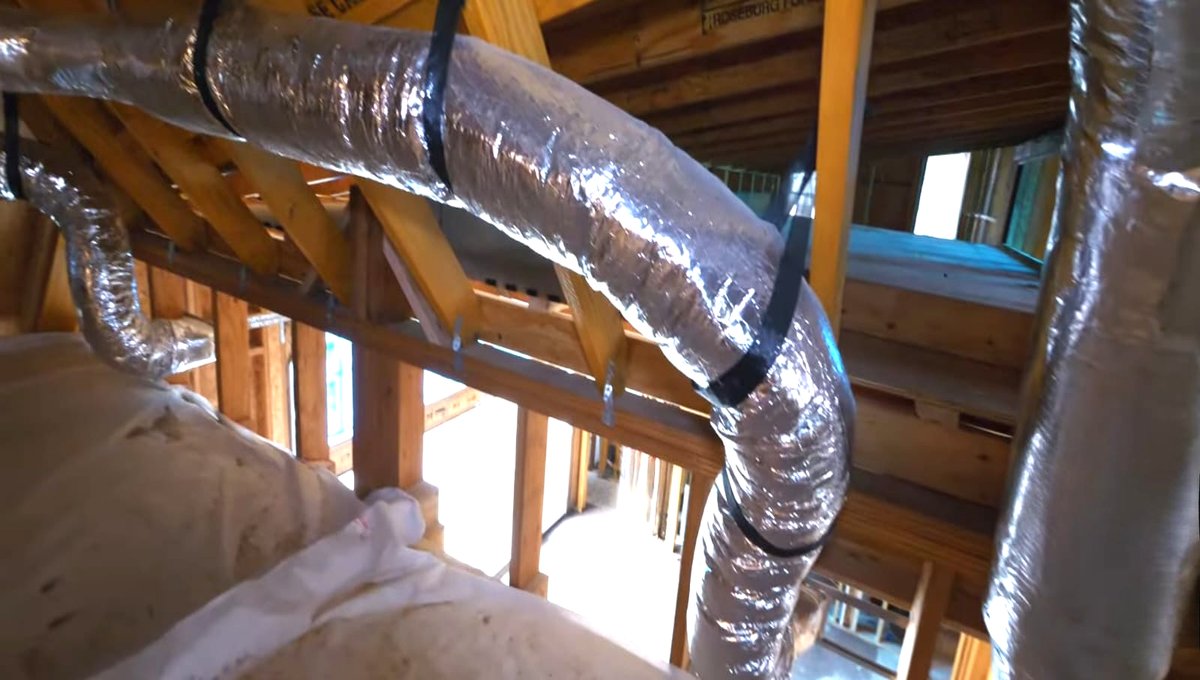When your HVAC system struggles with airflow loss, it’s really tough to swallow that your utility bills keep climbing. The average American home loses 20 to 30% of airflow, according to energy experts. This leaky duct system leads to wasted energy and nasty stuff like dust getting into your living space. What’s worse is that many companies will sell you expensive solutions, like a UV light installation, without actually addressing the core issue—sealing your ducts.

Adding spray foam insulation to your ductwork is one way to tackle this problem. Spray foam adheres well to metal ducts and creates an airtight barrier, preventing further loss. It can also improve your indoor air quality by keeping pollutants out. However, if your duct system isn’t fully accessible, partial insulation might cause more issues. In some cases, it’s smarter to focus on insulating your attic ducts to reduce the heat load on your HVAC system and improve efficiency.
Is Spray Foam Insulation for Ductwork a Good Idea?
Yes, spray foam insulation sticks to anything, including air ducts. It is applied as a plastic foam that sticks in place once sprayed, making it an effective way to seal leaks. It’s possible to spray foam onto air ducts, especially in attics, where temperature swings can impact your airflow.
When you use spray foam, you benefit from colder AC airflow in the summer and warmer heated air in the winter. This insulation helps reduce energy loss by sealing leaks, improving the efficiency of your HVAC system.
How Spray Foam Insulation Works for Ductwork
When ductwork in your attic is exposed to extreme temperatures during summer or winter, it takes on a significant heat load. This makes your AC airflow less effective in the summer and warmer air harder to retain in the winter. By spraying foam insulation on the ducts, you can help eliminate some of these issues. The intention behind spraying is to both insulate and air-seal, which prevents hot air from passing through and reaching the ducts.
One benefit of foam insulation is that it forms an airtight coating, which offers protection and prevents leaks. This method is particularly useful in hard-to-access ductwork, where traditional methods wouldn’t work without taking extra steps. Proper application applied directly to the ducts can improve energy efficiency and keep your system from working harder than necessary. By doing this, you’re not only keeping your home more comfortable, but also reducing energy waste.
Why You Should Think Twice Before Spraying Ductwork
While spraying ductwork with foam insulation can help reduce air leakage, we generally don’t recommend this method unless the entire duct can be fully encapsulated. The primary reason is that foam insulation must form a complete seal to provide the intended benefit. If ducts are only partially insulated, it may cause condensation issues. Moisture can penetrate open areas, condense on cold surfaces, and create more problems than it solves. Additionally, considering the cost of spray foam insulation, it’s important to ensure that the process is done correctly to avoid costly repairs in the future.
Another limitation is that ductwork is not always accessible. In some homes, inaccessible ducts make it impossible to spray a full 360 degrees around, which reduces the application’s effectiveness. In these cases, it’s better to focus on insulating the attic. Attic insulation can help manage the heat load, making your HVAC system more efficient without risking moisture problems.
The team you hire must understand the right approach to insulating ducts. For example, closed-cell foam works well for air sealing, but open-cell foam will allow moisture to seep in, leading to condensation. You need a solution that won’t consolidate issues into one area. Instead of taking shortcuts, consider improving your insulation in ways that protect your entire home environment.
Why Fully Sealing Your Ductwork Is a Smart Choice
A fully encapsulated duct system shouldn’t cause any harm to your home if done right. In fact, encapsulation can help solve the root issue of air leaks and energy loss. By spraying foam insulation directly on the ductwork, you remove excess heat load from attics, especially when they are overheated. This makes your HVAC system more efficient, preventing it from struggling to keep the air at a comfortable temperature.

Many cases show that insulating and encapsulating air ducts is one of the best choices for reducing energy costs. However, it’s important to ensure the encapsulation is complete. Partial sealing is like putting a bandage on a bigger problem, leaving some parts exposed to heat or cold air, which can cause issues. Instead, a realistic approach is to focus on sealing the entire thermal envelope, which will support your HVAC system and provide a better-conditioned home environment.
Final Thoughts on Using Spray Foam on Ductwork
Before spraying foam insulation on your ductwork, it’s important to recognize the limitations. While insulating the entire duct can improve your HVAC system’s efficiency, a partial application may exacerbate condensation issues and centralize problems. In many cases, it’s more appropriate to focus on attic encapsulation instead. This approach helps in lowering energy costs and supporting your HVAC system, especially upstairs where heat loss is more common. Make sure to reach out to a qualified contractor who understands how to properly encapsulate ductwork and avoid mistakes that cannot be easily fixed.
FAQ
Can Spray Foam Be Used on Ductwork?
Yes, spray foam insulation can be used on ductwork. It seals ducts and provides an airtight benefit, reducing air leaks. However, for spraying to work effectively, the ducts need to be fully encapsulated. If some areas are inaccessible, it won’t allow for a 360-degree seal, which may reduce the overall efficiency.
Where Not to Use Spray Foam Insulation?
Spray foam insulation should not be applied directly to electrical wiring, fixtures, or recessed lighting. It’s important to ensure these areas are rated for contact with insulation. Otherwise, it could cause overheating and pose a fire hazard. Always check with a professional to avoid potential risks.
Why Put Foam in Air Ducts?
Adding foam insulation to air ducts provides several benefits, including sound dampening and reducing leaks. It helps insulate the HVAC system, making it more efficient by keeping heated or cooled air inside the ducts instead of escaping. This leads to better airflow and lower energy costs.
Can You Use Foam Board Insulation for Ductwork?
Do not use rigid foam board insulation on ductwork unless you know the temperature rating. Ducts are typically insulated with foil or vinyl-backed fiberglass, which is specially made for this application. Using the wrong material can cause fumes, sickness, or even a fire hazard, so always get professional help to avoid underrated insulation risks.

